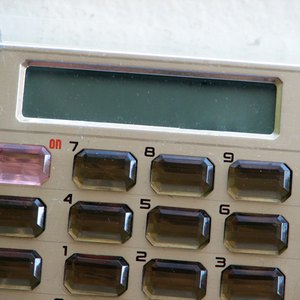
Calculating the market value of a piece of property is necessary when pricing a house to list, or when considering a purchase of real estate. The market value is what a ready and willing buyer will pay for the property in the current market. The market value of a specific piece of property is not necessarily the same as it was a year prior to calculating the value, or a year after.
Assessing the Property's Features
Prepare a list of the subject property’s features. For example, if the property is a house, list the year it was built, number of bedrooms, total square feet, size of garage, roof type, types of countertops and flooring, whether it has a fireplace, pool, landscaping, fencing or walls.
Finding Comparable Sales
Locate three to five similar properties that have sold in the previous 6 months. These are referred to as comparable properties, or "comps". For an accurate calculation, choose properties close in proximity to the subject property. If the subject property is located in a housing tract, the comparables should be from the same housing project. Comparable houses should be a similar size to the subject property--within 200 square feet.
It's difficult to determine an accurate market price without accurate sales data on local comparables or what specific features (such as a swimming pool) might be worth. Swimming pools can be a plus or minus. For example, in Arizona a swimming pool will typically increase the value of a house, but it might reduce the value of a house in a cold climate.
Comparing Comparables Against Subject Property
List the comparable properties, along with their sold price. The sold price is not the same as the listing price. Real estate professionals typically find these figures through their multiple listing service.
Note the differences between the comparable properties and the subject properties. Compare the features listed for the subject property with the comparable properties. For example, if the subject property was built in 1990 and the comparable property was built in 2000, note the comparable property is 10 years newer.
Adjusting Property Values
Make adjustments for the differences between each comparable property and the subject property. For example, if one comparable property sold for $200,000 and is similar to the subject property in most respects--but is 10 years newer than the subject property--an adjustment must be made.
When making an adjustment, the amount is not necessarily the actual cost of the item. For example, if the comparable property sold for $100,000 and the subject property is similar yet has a block wall that cost $20,000 to build, the adjustment would not be $20,000; it would be a percentage of that amount. Although the subject property would be worth more than $100,000, it would be worth less than $120,000.
Doing a Little Math
Tally up the adjustments for each property, and add or subtract that amount from the comparable property. For example, the market value of the subject property (in the example in the previous step) would be under $200,000, because it's older. The actual reduction would vary by region and local market conditions.
Not all amenities, such as additional or newer appliances, raise the market value of the property. It may make one property show better, but it doesn't necessarily raise the total when calculating the market price.
Averaging the Property Totals
Average the final totals. After adjusting the sale price (which is the actual sale price, plus or minus the adjustments), add all of the adjusted prices together and divide the number by the total number of comparable properties. The final number is the estimated market value of the subject property.
References
Tips
- When making an adjustment, the amount is not necessarily the actual cost of the item. For example, if the comparable property sold for $100,000 and the subject property is similar yet has a block wall that cost $20,000 to build, the adjustment would not be $20,000; it would be a percentage of that amount. Although the subject property would be worth more than $100,000, it would be worth less than $120,000. Not all amenities, such as additional or newer appliances, raise the market value of the property. It may make one property show better, but it doesn't necessarily raise the total when calculating the market price.
Warnings
- It's difficult to determine an accurate market price without accurate sales data on local comparables or what specific features (such as a swimming pool) might be worth. Swimming pools can be a plus or minus. For example, in Arizona a swimming pool will typically increase the value of a house, but it might reduce the value of a house in a cold climate.
Writer Bio
Ann Johnson has been a freelance writer since 1995. She previously served as the editor of a community magazine in Southern California and was also an active real-estate agent, specializing in commercial and residential properties. She has a Bachelor of Arts in communications from California State University, Fullerton.

